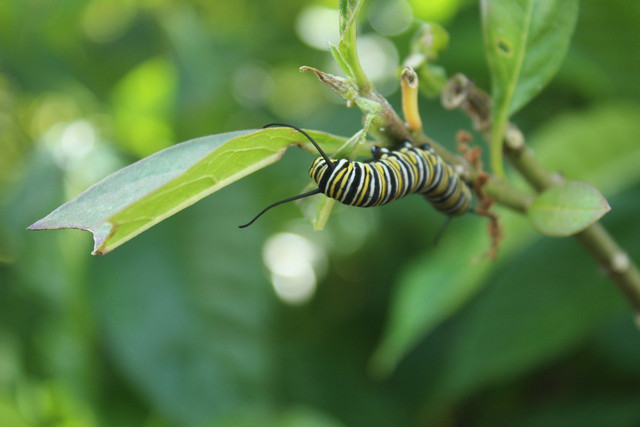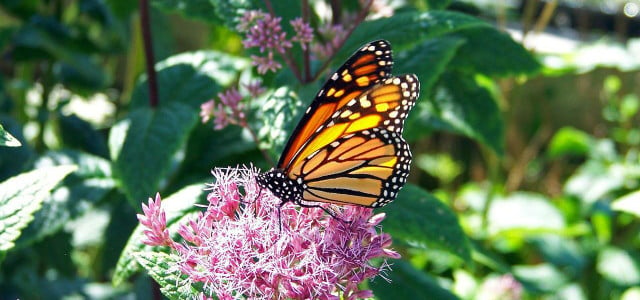Monarch butterflies need milkweed plants to survive. You can help monarchs by planting milkweed seeds at home.
The milkweed plant is essential to monarch butterflies’ survival as it is the only plant that the monarch caterpillars can eat. The butterflies lay their eggs on the plant leaves, and the caterpillars feast on the milkweed before building their cocoons.
You can help monarchs thrive by planting milkweed seeds in your garden, on your windowsill, and around your neighborhood. However, there are different types of milkweed. It’s important to use those which are native to your area. Otherwise, non-native milkweed can attract parasites that are dangerous to monarchs. Make sure to purchase local seeds which are appropriate for the climate.
DIY: Planting Milkweed Seeds

(Foto: CC0 / Pixabay / alaynawilk)
The best time to plant milkweed seeds is in the fall, but you can plant them in the spring as well by mimicking the fall freezing and thawing cycle. Milkweed seeds are not meant to germinate until spring because they need to freeze and thaw first in order to soften and prepare for growth.
Fall Planting
- Use a seed tray with draining holes and fresh seed starting soil mix. You can add some homemade compost as well.
- Distribute the seeds about 1/2 inch apart and plant them about 1/4 inch deep in the soil.
- Fill a baking dish 1/2 inch high with water and place the seed tray inside. Using this bottom-up watering method helps prevent overwatering.
- After the initial watering, place your seed tray outside in a sunny spot in your garden or on your windowsill. The seeds will undergo the freezing and thawing cycle. They will then begin to sprout in the spring when the conditions are right.
Spring Planting
- Start six weeks before you want to plant the seeds.
- Place a damp cloth inside a plastic food container (or a non-plastic alternative).
- Scatter the milkweed seeds over the cloth and cover them with a second dampened towel.
- Seal your storage container with a lid.
- Place the container inside your refrigerator and leave it there for six weeks.
- When spring comes, place the seeds outdoors in a sunlit spot. They will then begin to sprout.
Caring for Your Milkweed



(Foto: CC0 / Pixabay / NickyPe)
- Once the milkweed seeds have sprouted, water the little plants weekly, soaking the soil about 3 inches deep. Continue doing so for two to three months, or until the plant has grown to about a foot tall. Milkweed plants are generally self-sufficient and do not require consistent watering once they have become comfortable in their environment.
- If your area is going through a drought, you may need to supplement watering your plant to get through the dry spell.
- Do not use any pesticides. They are not necessary for your milkweed to thrive.
- To prevent the milkweed from taking over your garden, prune the flowers before they turn into seedpods.
Read more
- DIY Butterfly Feeder: How to Make One and Why
- 11 Flowering Bushes and Shrubs to Bring Birds and Insects to Your Garden
- Growing Mint: Mint Plant Care in your Garden or Kitchen
Do you like this post?






